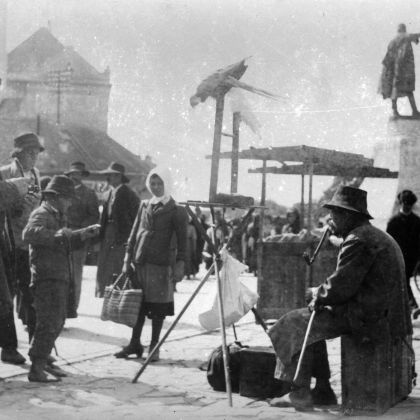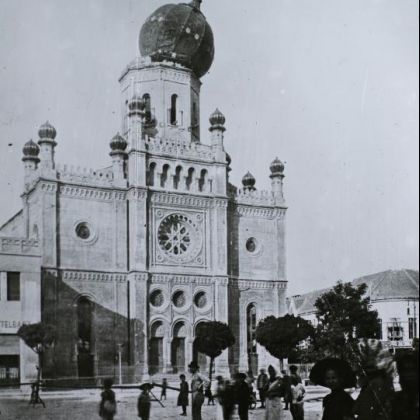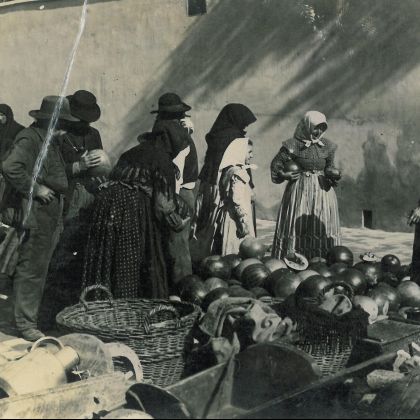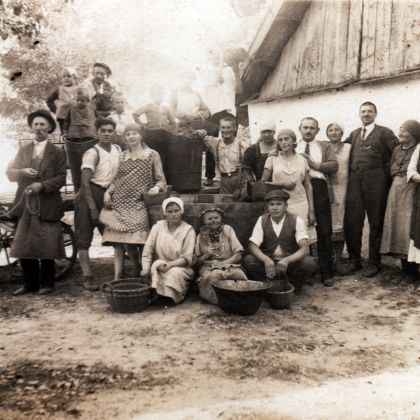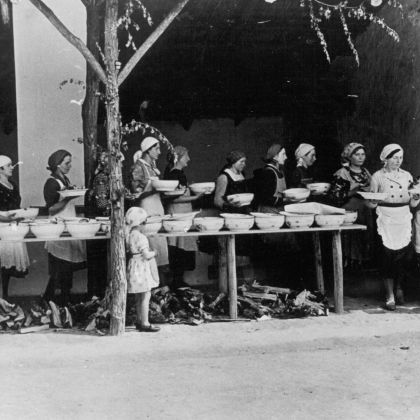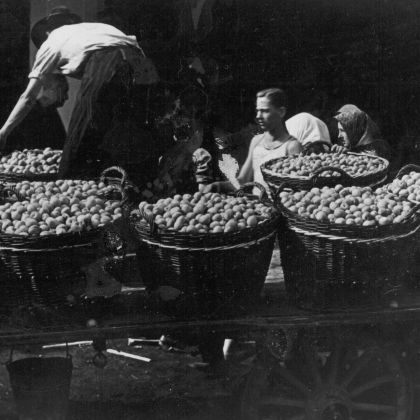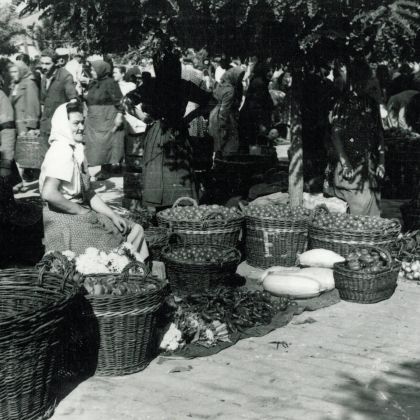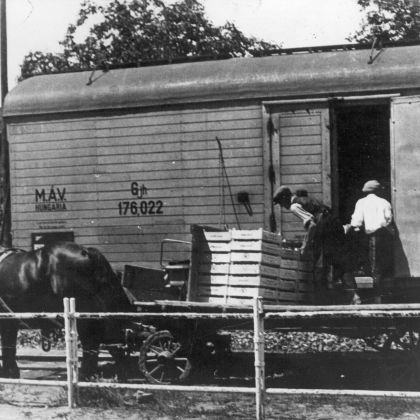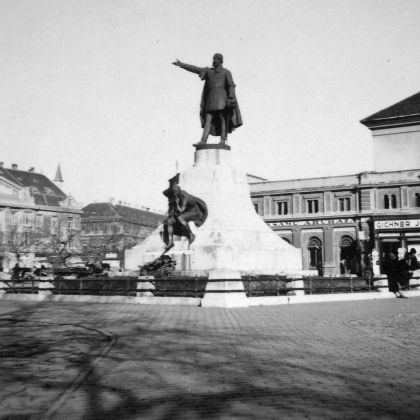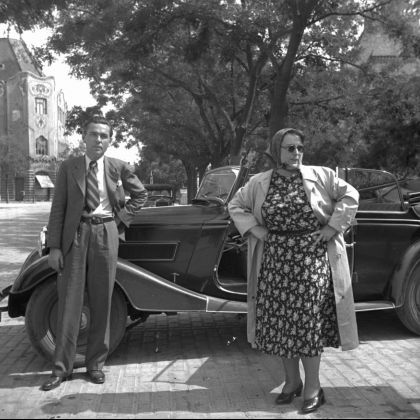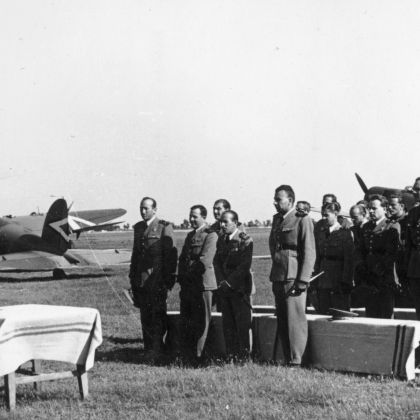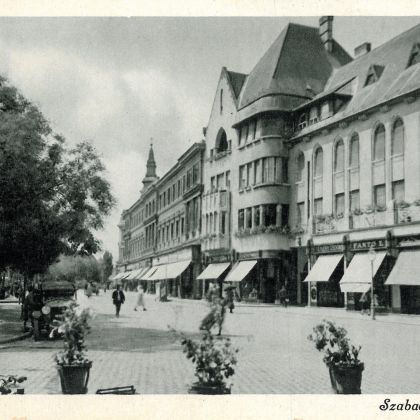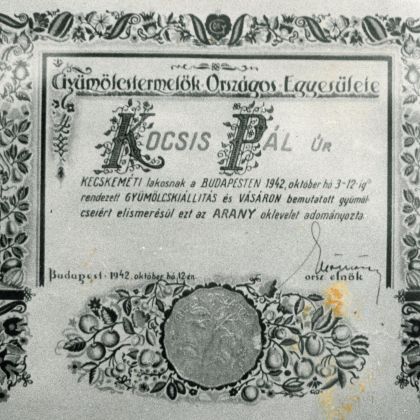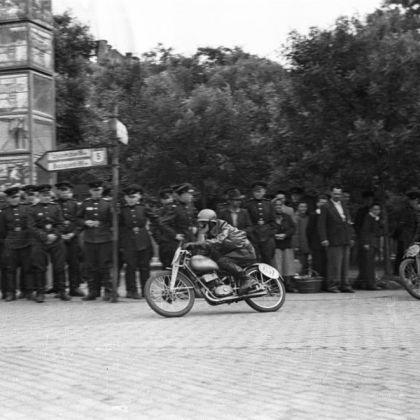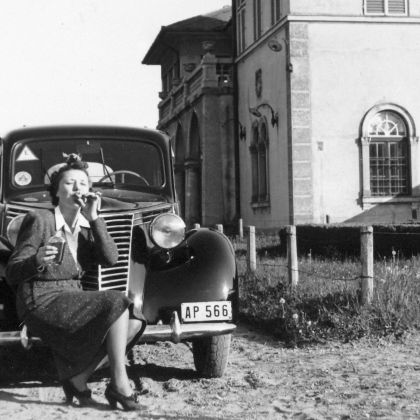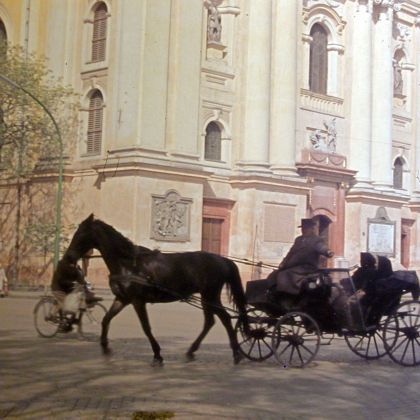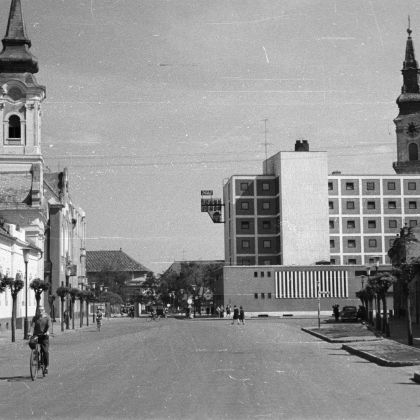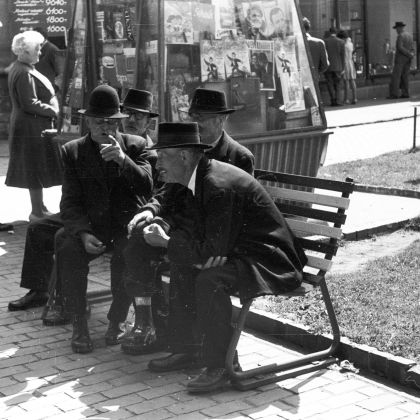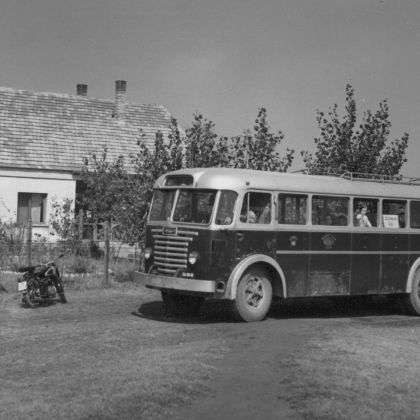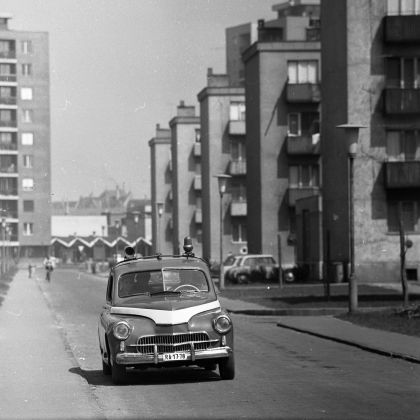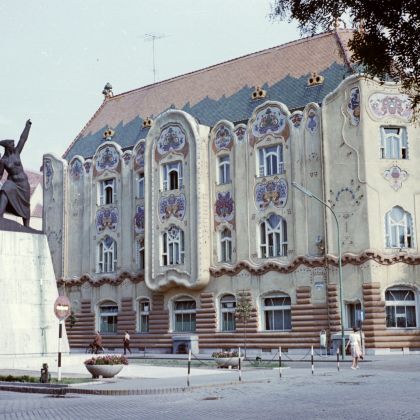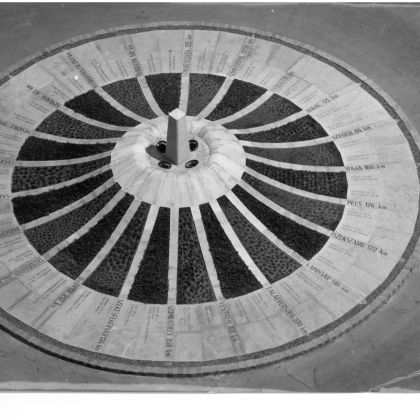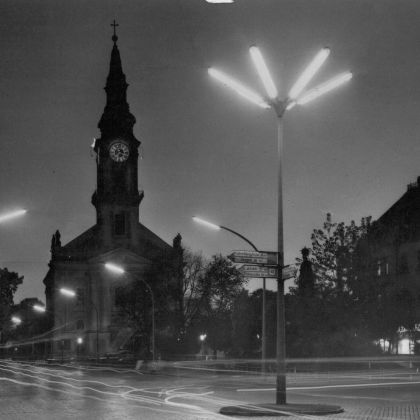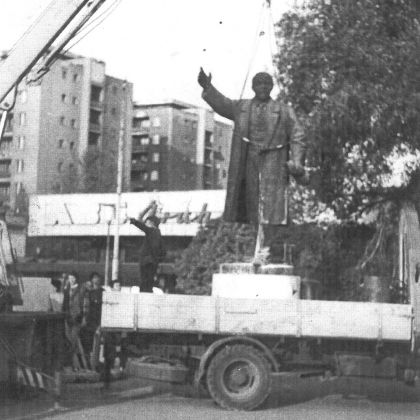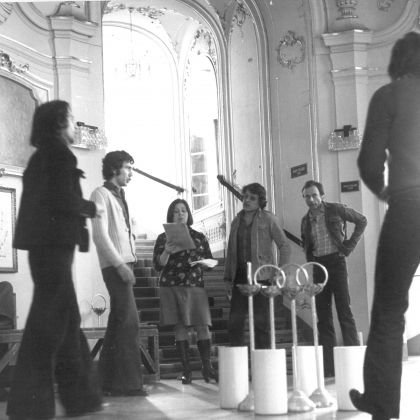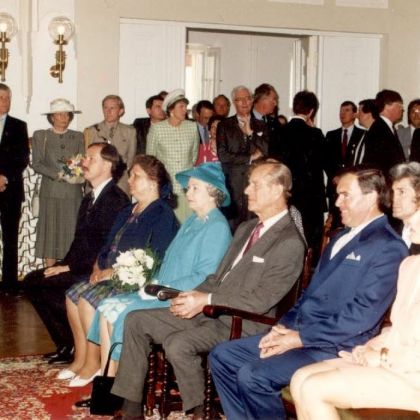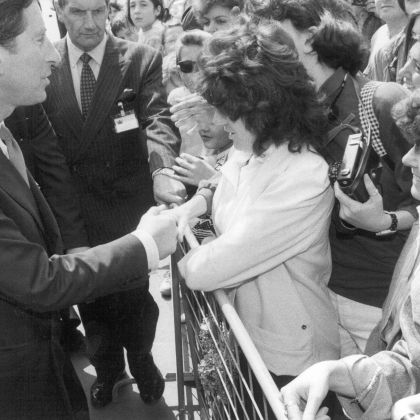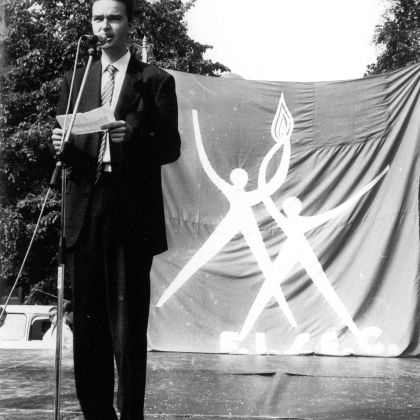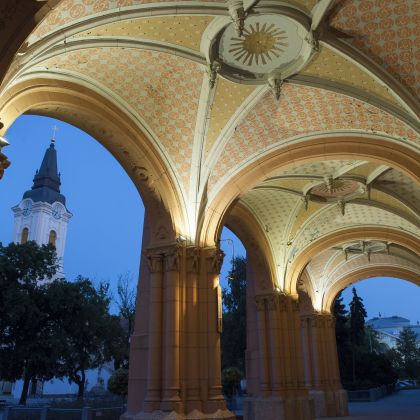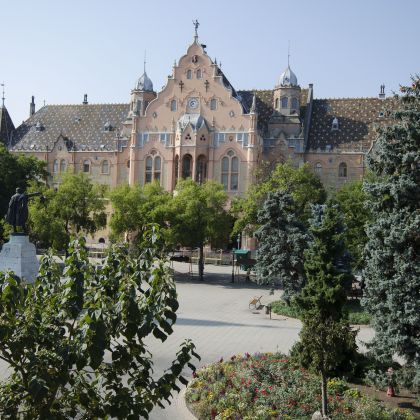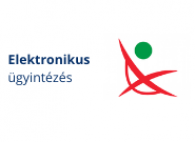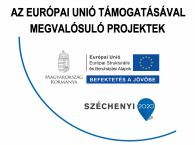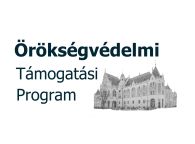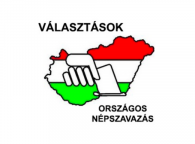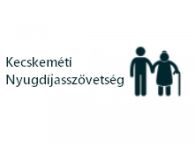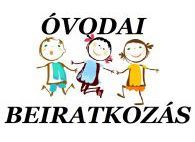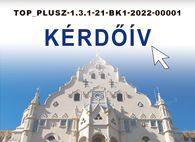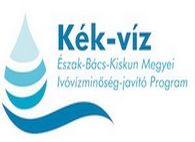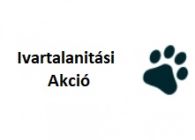Kecskemét rövid története
Kecskemét évszázadokon keresztül a Duna-Tisza köze legjelentősebb városa, gazdasági, egyházi és iskolai központja. 2018-ban a 650 éves évforduló ünneplése arra az 1368-ban keletkezett királyi oklevélre alapult, amelyben már mezővárosként említették Kecskemétet. Természetesen városunk területe már jóval korábban lakott volt, erről tanúskodnak a különböző korokból származó régészeti leletek, köztük a honfoglalás korának tárgyi emlékei.
A magyar állam- és egyházszervezést követően a mai Kecskemét közelében is apró falvak, templomos helyek léteztek, amelyek nevét a későbbi írásos források is megőrizték: Juhász-, Kolos-, Koldus-, Hetény- és Törökegyháza, valamint Ballóság. A tatárjárás idején az Árpád-kori kecskeméti lakóhelyek is elpusztultak. Városunk a 14. századtól jelentős településsé fejlődött a Buda és Szeged közötti fontos kereskedelmi útvonal mentén. A 15. század közepéig királyi birtok, majd magánföldesurak kezére került. A reformációt követően a katolikus vallás mellett a protestáns tanok is meghonosodtak, létrejött a református egyházközség és iskola. Rövid ideig közösen használták a katolikus plébániatemplomot, majd a reformátusok új templomot építettek.
1526-ban, a mohácsi csatavesztést követően a Duna-Tisza közén átvonuló török seregek feldúlták a várost. A hódoltság másfél évszázada összességében súlyos megterhelést jelentett, a szultáni hászbirtokká (kincstári birtokká) nyilvánítás azonban nemcsak magasabb adókat, hanem viszonylagos önállóságot is jelentett. Az elnéptelenedett falvak lakói Kecskemétre költöztek, gazdaságilag megerősödve a két folyó között a legjelentősebb településsé vált. A török megszállás idején jöttek létre az első céhek, a református kollégium, és a hódoltság végén épült a református templom. A török alóli felszabadító háborúk idején Kecskemét két tűz közé került, a katonai átvonulások, az élelmezés és a hadikiadások súlyos terhet jelentettek. Egykori szóhasználattal: "A török alatt boldog volt Kecskemét, de a német egyik csöcsét sem hagyta fejetlenül a tehénnek."
A Rákóczi szabadságharc idején ismét két tűz közé került a város, 1703-tól a kuruc hadakat segítette, 1705-től a labancokat is kénytelen volt kiszolgálni. A császáriak oldalán álló portyázó rác csapatok 1707. április 2-án éjjel a város történetének egyik legnagyobb tragédiáját okozták rablással, gyújtogatással, gyilkolással. A 18. század folyamán a gazdasági megerősödés legfőbb forrása a nagyhatárú pusztákon folyó állattartás és az állatkereskedelem volt. A század végén királyi megerősítéssel már öt országos vásárt tarthatott Kecskemét. Várostörténeti jelentőségű a piarista szerzetesek letelepítése, a piarista iskola létrehozása és templomuk felépítése. A járványok és katasztrófák a 18-19. században is nehezítették az itt élők életét: 1739-40-ben a lakosság egyharmada (több mint 6000 fő) halt meg a pestisjárványban, az 1790-es években és 1819-ben tűzvészek pusztították a várost.
A 19. század első felében hosszú távra szóló megoldások születtek a korabeli város legnagyobb problémáira. A futóhomokos területeket parcellázták, erdősítéssel és szőlőültetéssel hasznosították. A város saját erőből megváltakozott a földesuraktól. Megkezdték a városrendezési munkákat és a körúton (az egykori védőárkon) kívüli városrészek építését. Az 1840-es években megjelentek az első cégek, kapitalista vállalkozók. A reformkor jelentős eredményei közé tartozik az Ókollégium építése és az első kecskeméti nyomda működése.
1848. márciusában a város lakossága egyöntetű lelkesedéssel fogadta a forradalom hírét. A szabadságharc szinte minden színterén ott voltak a kecskemétiek: nemzetőrök, honvédek, gerillák. 1848 nyarán először választottak országgyűlési követeket és polgármestert. A szabadságharc katonáinak, valamint a megszálló Jellasich és Haynau seregének ellátása és az önkényuralmi megtorlás súlyos terhet és veszteséget jelentett a város számára.
Az általános fellendülést és városias fejlődést a kiegyezést követő évtizedek hozták meg Kecskemét számára. Az 1870-es évektől Kecskemét törvényhatósági jogú város, jelentős önkormányzati hatáskörrel. A kedvező külső körülmények mellett nagy egyéniségek, városépítő polgármesterek is kedvezően alakították a város jövőjét. Birtokszerzések, parcellázások, nagyszabású szőlő-és gyümölcstelepítés, a tanyai gazdaságok gyarapodása, vasútépítések, híres piacok és jelentős export jellemezte ezt az időszakot. A századfordulóra Kecskemét a barack városa és a szecesszió városa. A gazdaságban a mezőgazdasági jelleg mellett megjelentek a gyárak, ipari üzemek. Kecskemétről nem volt kivándorlás, volt munkalehetőség és gyarapodott a lakosság. A mai főtér, a Rákóczi út és a belvárosi paloták ezekben az években épültek. A látványos fejlődés és a boldog békeidők végét az 1911. évi földrengés és az első világháború jelentette. A vesztes első világháború mérlege Kecskemét számára az itthoni megpróbáltatásokon és anyagi veszteségen túl közel ötezer halott és hadirokkant.
A két világháború közötti időszakban nagy hangsúlyt kapott az iskolák, a kertkultúra, a piac, a kereskedelem és az idegenforgalom fejlesztése. Ez utóbbit szolgálta a Hírös Hetek megrendezése is.
A második világháború idején Kecskemét fontos logisztikai központ volt, számos ide csoportosított katonai egység innen indult a frontra. A legtöbb közintézményben, iskolaépületben hadikórházat rendeztek be. Az egyik legismertebb kecskeméti alakulat a 7. honvéd gyalogezred volt, katonái közül sokan odavesztek 1942/43 telén a Don-kanyarban, 1944/45-ben pedig a hadifogságba és a malenkij robotra elhurcoltak gyarapították az áldozatok listáját.
1944. október 1-től a Duna-Tisza köze hadműveleti területté vált, október 31-én a II. Ukrán Front katonái elérték a várost. A korábban kiadott kényszerkiürítési rendeletnek engedelmeskedve a város lakosságának nagy része elhagyta lakóhelyét, sokan csak hónapok múlva térek vissza a kifosztott városba.
Az újjáépítést követően 1948-ban a helyi társadalom egészére hátrányos helyzetet teremtett az államosítás végrehajtása, majd a termőföldek kollektivizálása.
1950-től Kecskemét Bács-Kiskun megye székhelye lett. Az itt élők és a betelepülők számára az átalakított régi kecskeméti üzemek és új nagyvállalatok helyi részlegei adtak munkalehetőséget. Az iparfejlesztés napjainkban a Mercedes-gyár letelepítésével érte el az eddigi legmagasabb szintet. Kecskemét mezővárosi jellegét és a régi városképet alapvetően megváltoztatta a városrendezés, az új lakótelepek és a körúton kívüli területek beépítése. Az 1970-es évektől jelentős fejlesztés történt a kulturális területen is.
Kecskemét jelenleg megyei jogú város, önkormányzati önállósággal. Napjainkra is érvényes a történelmi múltra vonatkozó megállapítás: városunk a Duna-Tisza legjelentősebb települése, gazdasági, egyházi és iskolai központ, számos kulturális intézménnyel és felsőoktatással.
A magyar állam- és egyházszervezést követően a mai Kecskemét közelében is apró falvak, templomos helyek léteztek, amelyek nevét a későbbi írásos források is megőrizték: Juhász-, Kolos-, Koldus-, Hetény- és Törökegyháza, valamint Ballóság. A tatárjárás idején az Árpád-kori kecskeméti lakóhelyek is elpusztultak. Városunk a 14. századtól jelentős településsé fejlődött a Buda és Szeged közötti fontos kereskedelmi útvonal mentén. A 15. század közepéig királyi birtok, majd magánföldesurak kezére került. A reformációt követően a katolikus vallás mellett a protestáns tanok is meghonosodtak, létrejött a református egyházközség és iskola. Rövid ideig közösen használták a katolikus plébániatemplomot, majd a reformátusok új templomot építettek.
1526-ban, a mohácsi csatavesztést követően a Duna-Tisza közén átvonuló török seregek feldúlták a várost. A hódoltság másfél évszázada összességében súlyos megterhelést jelentett, a szultáni hászbirtokká (kincstári birtokká) nyilvánítás azonban nemcsak magasabb adókat, hanem viszonylagos önállóságot is jelentett. Az elnéptelenedett falvak lakói Kecskemétre költöztek, gazdaságilag megerősödve a két folyó között a legjelentősebb településsé vált. A török megszállás idején jöttek létre az első céhek, a református kollégium, és a hódoltság végén épült a református templom. A török alóli felszabadító háborúk idején Kecskemét két tűz közé került, a katonai átvonulások, az élelmezés és a hadikiadások súlyos terhet jelentettek. Egykori szóhasználattal: "A török alatt boldog volt Kecskemét, de a német egyik csöcsét sem hagyta fejetlenül a tehénnek."
A Rákóczi szabadságharc idején ismét két tűz közé került a város, 1703-tól a kuruc hadakat segítette, 1705-től a labancokat is kénytelen volt kiszolgálni. A császáriak oldalán álló portyázó rác csapatok 1707. április 2-án éjjel a város történetének egyik legnagyobb tragédiáját okozták rablással, gyújtogatással, gyilkolással. A 18. század folyamán a gazdasági megerősödés legfőbb forrása a nagyhatárú pusztákon folyó állattartás és az állatkereskedelem volt. A század végén királyi megerősítéssel már öt országos vásárt tarthatott Kecskemét. Várostörténeti jelentőségű a piarista szerzetesek letelepítése, a piarista iskola létrehozása és templomuk felépítése. A járványok és katasztrófák a 18-19. században is nehezítették az itt élők életét: 1739-40-ben a lakosság egyharmada (több mint 6000 fő) halt meg a pestisjárványban, az 1790-es években és 1819-ben tűzvészek pusztították a várost.
A 19. század első felében hosszú távra szóló megoldások születtek a korabeli város legnagyobb problémáira. A futóhomokos területeket parcellázták, erdősítéssel és szőlőültetéssel hasznosították. A város saját erőből megváltakozott a földesuraktól. Megkezdték a városrendezési munkákat és a körúton (az egykori védőárkon) kívüli városrészek építését. Az 1840-es években megjelentek az első cégek, kapitalista vállalkozók. A reformkor jelentős eredményei közé tartozik az Ókollégium építése és az első kecskeméti nyomda működése.
1848. márciusában a város lakossága egyöntetű lelkesedéssel fogadta a forradalom hírét. A szabadságharc szinte minden színterén ott voltak a kecskemétiek: nemzetőrök, honvédek, gerillák. 1848 nyarán először választottak országgyűlési követeket és polgármestert. A szabadságharc katonáinak, valamint a megszálló Jellasich és Haynau seregének ellátása és az önkényuralmi megtorlás súlyos terhet és veszteséget jelentett a város számára.
Az általános fellendülést és városias fejlődést a kiegyezést követő évtizedek hozták meg Kecskemét számára. Az 1870-es évektől Kecskemét törvényhatósági jogú város, jelentős önkormányzati hatáskörrel. A kedvező külső körülmények mellett nagy egyéniségek, városépítő polgármesterek is kedvezően alakították a város jövőjét. Birtokszerzések, parcellázások, nagyszabású szőlő-és gyümölcstelepítés, a tanyai gazdaságok gyarapodása, vasútépítések, híres piacok és jelentős export jellemezte ezt az időszakot. A századfordulóra Kecskemét a barack városa és a szecesszió városa. A gazdaságban a mezőgazdasági jelleg mellett megjelentek a gyárak, ipari üzemek. Kecskemétről nem volt kivándorlás, volt munkalehetőség és gyarapodott a lakosság. A mai főtér, a Rákóczi út és a belvárosi paloták ezekben az években épültek. A látványos fejlődés és a boldog békeidők végét az 1911. évi földrengés és az első világháború jelentette. A vesztes első világháború mérlege Kecskemét számára az itthoni megpróbáltatásokon és anyagi veszteségen túl közel ötezer halott és hadirokkant.
A két világháború közötti időszakban nagy hangsúlyt kapott az iskolák, a kertkultúra, a piac, a kereskedelem és az idegenforgalom fejlesztése. Ez utóbbit szolgálta a Hírös Hetek megrendezése is.
A második világháború idején Kecskemét fontos logisztikai központ volt, számos ide csoportosított katonai egység innen indult a frontra. A legtöbb közintézményben, iskolaépületben hadikórházat rendeztek be. Az egyik legismertebb kecskeméti alakulat a 7. honvéd gyalogezred volt, katonái közül sokan odavesztek 1942/43 telén a Don-kanyarban, 1944/45-ben pedig a hadifogságba és a malenkij robotra elhurcoltak gyarapították az áldozatok listáját.
1944. október 1-től a Duna-Tisza köze hadműveleti területté vált, október 31-én a II. Ukrán Front katonái elérték a várost. A korábban kiadott kényszerkiürítési rendeletnek engedelmeskedve a város lakosságának nagy része elhagyta lakóhelyét, sokan csak hónapok múlva térek vissza a kifosztott városba.
Az újjáépítést követően 1948-ban a helyi társadalom egészére hátrányos helyzetet teremtett az államosítás végrehajtása, majd a termőföldek kollektivizálása.
1950-től Kecskemét Bács-Kiskun megye székhelye lett. Az itt élők és a betelepülők számára az átalakított régi kecskeméti üzemek és új nagyvállalatok helyi részlegei adtak munkalehetőséget. Az iparfejlesztés napjainkban a Mercedes-gyár letelepítésével érte el az eddigi legmagasabb szintet. Kecskemét mezővárosi jellegét és a régi városképet alapvetően megváltoztatta a városrendezés, az új lakótelepek és a körúton kívüli területek beépítése. Az 1970-es évektől jelentős fejlesztés történt a kulturális területen is.
Kecskemét jelenleg megyei jogú város, önkormányzati önállósággal. Napjainkra is érvényes a történelmi múltra vonatkozó megállapítás: városunk a Duna-Tisza legjelentősebb települése, gazdasági, egyházi és iskolai központ, számos kulturális intézménnyel és felsőoktatással.
2019. november 4.
